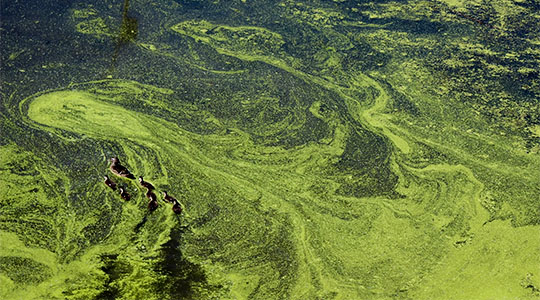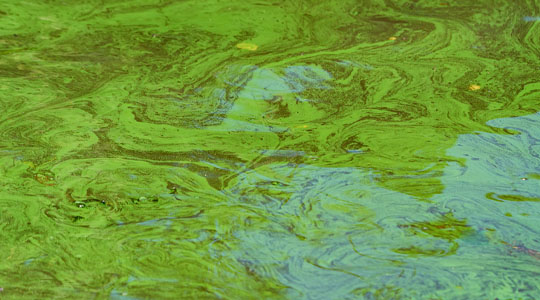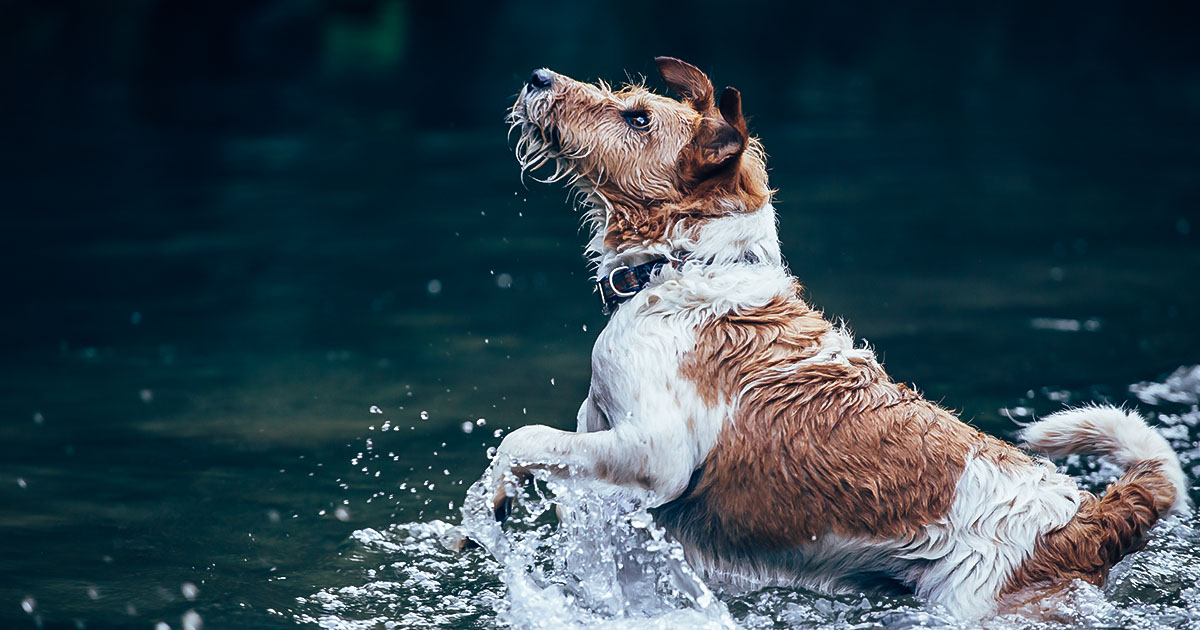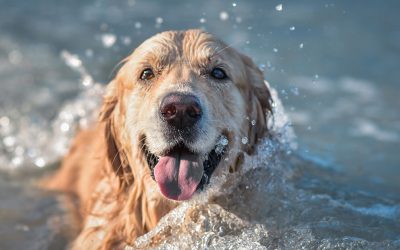Toxic Algae Blooms – What Are They?
Although it is well documented that pets can die from drinking toxic algae blooms, it is not well known by most pet owners. Algae intoxications happen more during the summer because weather conditions promote the growth of cyanobacteria also known as blue-green algae. These organisms are incredibly toxic and are known to cause poisoning in dogs, cats, livestock, wildlife, birds, fish, and even humans.
Algal blooms occur when algae, which are usually found in water, multiply very quickly. In Florida, algal blooms can be found in freshwater, salt water, and brackish water bodies. Algal blooms can occur at any time but tend to occur most commonly in late summer and early fall.
An algal bloom may have the following characteristics:
- The algae may look like grains of floating green sand or scum.
- Discoloration of the water such as green, blue, brown, or red.
- Look like foam, mats, or paint on the surface of the water.
- Smell bad.
- Have dead fish in or around the water.
What are harmful algal blooms?
Toxic algae blooms occur when there is a rapid growth of certain types of algae which can cause harm to people, animals, or the local environment. The harmful algae blooms of most concern to human and animal health are those that produce toxins. It is not possible to tell if there are toxins associated with the bloom just by looking at it. In freshwaters such as lakes and rivers, the most common toxic algae blooms are caused by cyanobacteria, sometimes called blue-green algae. In salt water, an example of a harmful algal bloom is red tide that may be found in the Gulf of Mexico.
The algae often concentrate along the shoreline where animals swim and drink. Illness and death in dogs have been linked to exposure to toxic algae blooms.
There is no way to know if a bloom is toxic simply by looking at it.


How does my dog get sick from algae blooms?
Dogs are exposed by swimming in or drinking water that contains harmful algal bloom toxins. Some dogs are attracted to the smell and taste of algae. They may eat the scum, foam, or dead fish in or around the water that contains toxins. In addition, dogs may also lick algae off their fur after swimming.
If your dog comes into contact with an algal bloom, wash them thoroughly with clean water as soon as possible and call your veterinarian especially if there are signs of illness.
Symptoms of Algal Poisoning in Your Pet
Symptoms of intoxication can occur within a few minutes to a few days of being exposed to toxins from algae blooms. Symptoms can include:
- Lack of energy
- Weakness, stumbling
- Diarrhea
- Seizures
- Panting
- Excessive drooling
- Respiratory failure
- Disorientation
- Vomiting
- Liver failure
- Death
If your dog begins to experience any of these symptoms after swimming or being near a body of water, you should contact your veterinarian immediately.
How to prevent your pet from getting sick from an algae bloom
If you see signs of an algae bloom:
- Keep your dog on a leash and away from the water.
- Don’t let your dog drink water or eat anything nearby.
- Don’t let your dog lick their fur until they’ve been bathed if they have been in contact with an algal bloom.
Many public health departments test the water in areas that are known to have outbreaks and will post signs when there is a safety risk. Follow the signs to keep your dog safe.
REMEMBER… there is no way to tell if a bloom is toxic just by looking at it.
If in doubt, keep out!
Learn more about harmful algae blooms (HABS) at Aquatic Toxins, Florida Department of Health



